Author: Marshall Schott
Homebrewers have a knack for worrying about seemingly petty details with arguments for or against a certain practice often based on reasonable, albeit naive, self-invented theories. A few months back, I was chatting with a dude about an IPA he’d recently made and shared with me, while discussing his process he mentioned using a fine mesh bag to filter his kettles hops. Having just met this guy, I presumed this step was employed in order to avoid clogging a counterflow chiller, but then he mentioned chilling his wort using an immersion chiller. When I asked him why he filtered his hops, he informed me a sense of certainty that not doing so results in more hop matter making it to the fermentor, which ultimately leads to grassy off-flavors in the finished beer.
I used to filter my hops too, the main reason being it’s what the directions on the kits I bought said to do. There must be some good reason, right? As I began brewing more often, the ritualistic cleaning of the bags became annoying, so I hit the web in search of justification for this practice and found, well, not very much, either presumptive statements of fact based on anecdotal evidence, usually with the intent of selling an idea or product, or allusions to the potential impact filtering hops might have on utilization. Even today, I could find nothing demonstrating a legitimate effect of sacking one’s hops during the boil.
I began tossing loose hops directly into the kettle about 4 years ago and never looked back, as this change seemed to have absolutely zero impact on the quality of my beers. However, I remained curious if hop filtration created an appreciable difference and decided to test it out for myself.
| PURPOSE |
To investigate the differences between two beers of the same recipe where one had hops filtered during the boil while hops were added directly to the wort in the other.
| METHODS |
I’d recently picked up a fresh pack of WLP002 English Ale Yeast and, desiring a simple yet tasty beer, decided to make a slightly adapted version of a popular Pale Ale out of Oregon.
Pirror Mond Pale Ale
Recipe Details
| Batch Size | Boil Time | IBU | SRM | Est. OG | Est. FG | ABV |
|---|---|---|---|---|---|---|
| 5.5 gal | 60 min | 43.8 IBUs | 7.7 SRM | 1.053 | 1.014 | 5.1 % |
| Actuals | 1.053 | 1.013 | 5.2 % | |||
Fermentables
| Name | Amount | % |
|---|---|---|
| Brewer's Malt, 2-Row, Premium (Great Western) | 10.375 lbs | 91.21 |
| Caramel/Crystal Malt - 60L | 12 oz | 6.59 |
| Cara-Pils/Dextrine | 4 oz | 2.2 |
Hops
| Name | Amount | Time | Use | Form | Alpha % |
|---|---|---|---|---|---|
| Cascade | 15 g | 60 min | Boil | Pellet | 9.3 |
| Cascade | 20 g | 30 min | Boil | Pellet | 9.3 |
| Cascade | 20 g | 5 min | Boil | Pellet | 9.3 |
| Centennial | 25 g | 10 min | Aroma | Pellet | 9.9 |
Yeast
| Name | Lab | Attenuation | Temperature |
|---|---|---|---|
| English Ale (WLP002) | White Labs | 67% | 65°F - 68°F |
Download
| Download this recipe's BeerXML file |
I got the starter spinning about 36 hours before brewing.
Since the variable would be introduced during the boil, I decided to evenly split the sweet wort post-mash to ensure the most equal treatment possible. Because of this, I chose to use a standard 10 gallon batch sparge method for this xBmt, collecting the liquor and milling the grains the night before brewing.
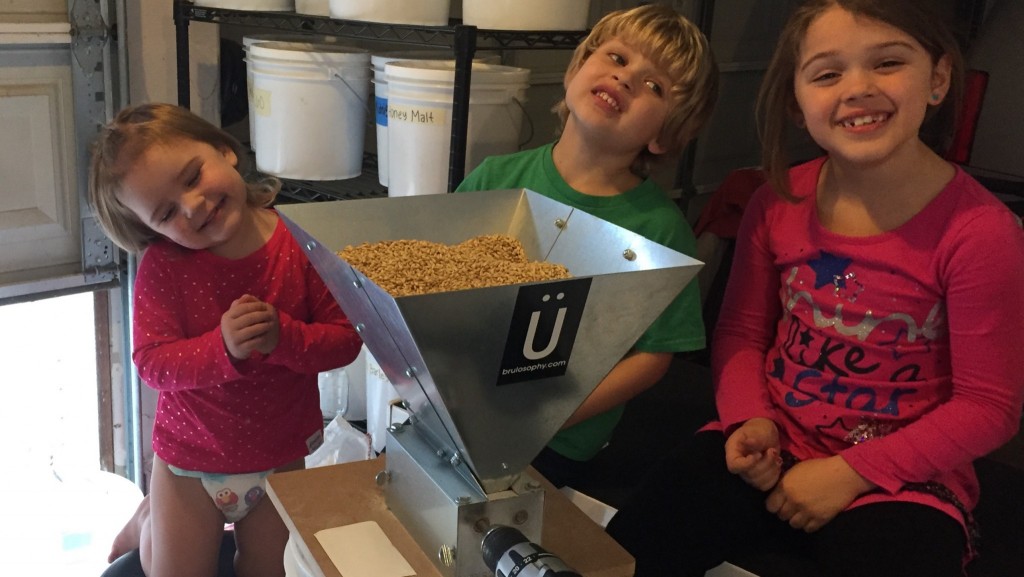
The following morning, I hit the flame under the strike water kettle and was all mashed in about 15 minutes later, precisely hitting my target mash temp.
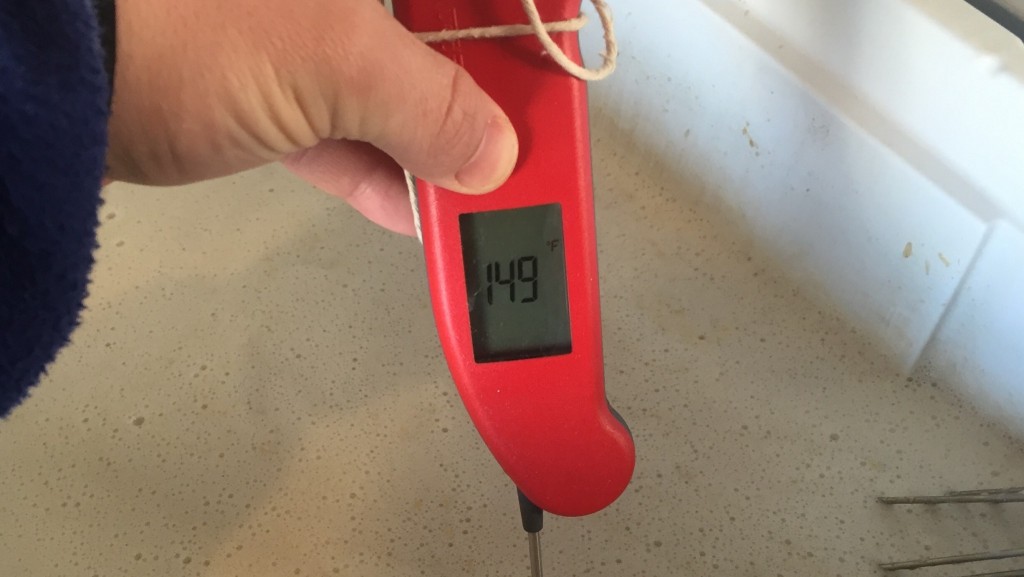
After about 45 minutes and a couple stirs, I began collecting the first runnings of sweet wort.
After a quick batch sparge, I added the second runnings to the kettle, stirred very well to ensure homogeneity, then split the wort equally between 2 kettles.
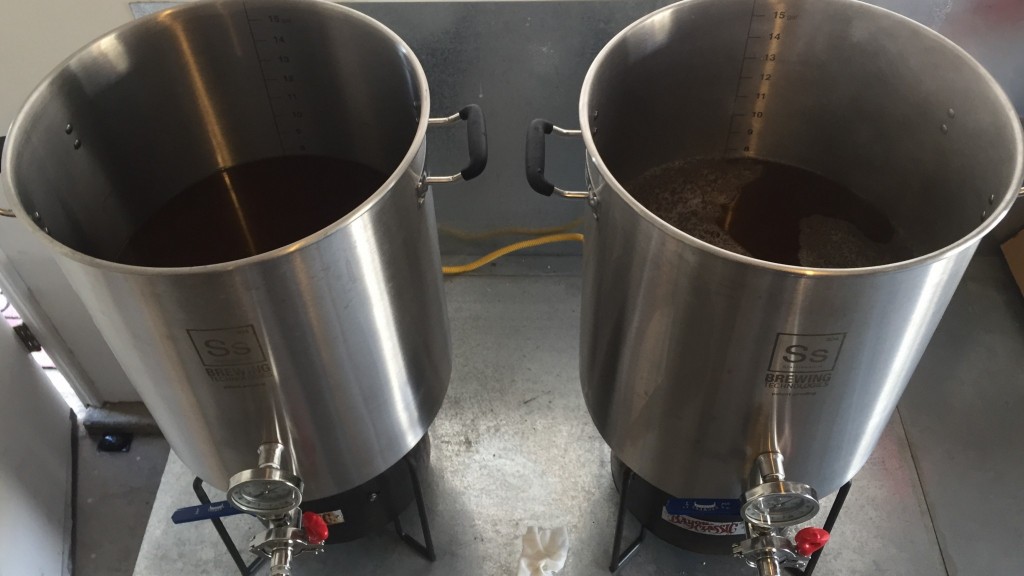
I staggered the start of the boils by approximately 10 minutes in order to make chilling easier. The same exact amount of kettle hops were added to both batches according to the recipe.
At the conclusion of the 60 minute boil, I quickly chilled each wort to 74˚F/23˚C then transferred the same amount to 6 gallon PET carboys that were placed in a temperature regulated chamber to finish chilling to my 66˚F/19˚C target fermentation temperature.
Then I cleaned up. It was interesting to see just how much hop matter didn’t make it into the bagged hops batch. Would it have an impact on the final character of the beer?
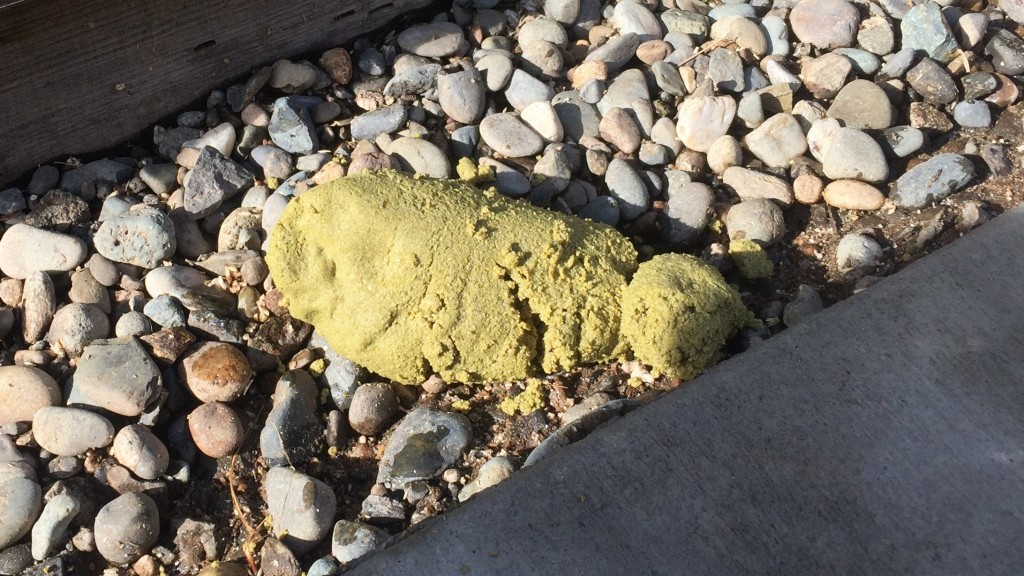
About 3 hours later, I returned to pitch the yeast, evenly splitting it between the batches.
Fermentation was visibly the same for both beer with both finishing at identical 1.013 FG, putting this right at 5.2% ABV.

A hydrometer measurement confirmed The Beer Bug reading, which is always nice. I proceeded to cold crash overnight, fine with gelatin, then keg the beers the following day.
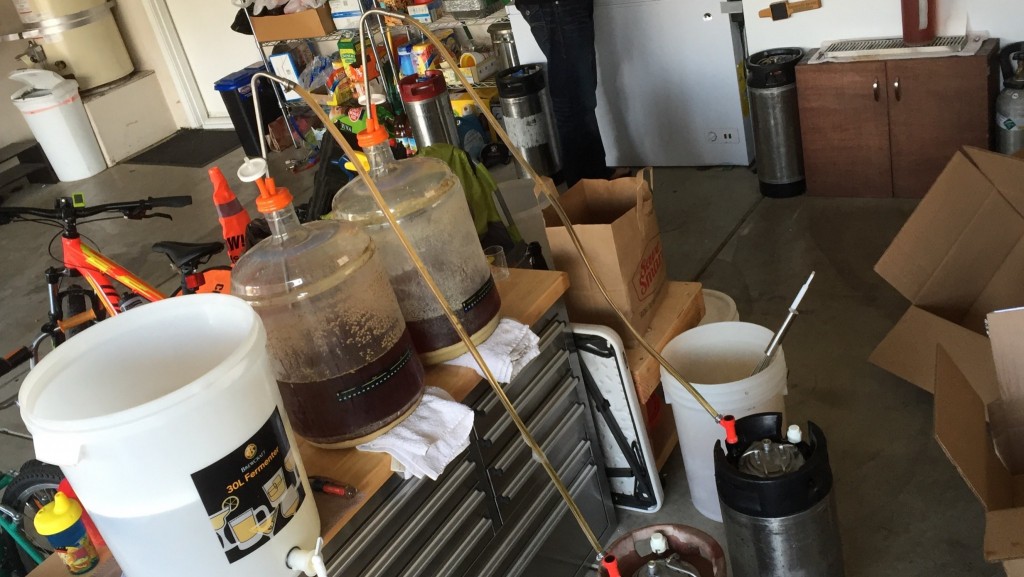
After a day at 45 psi in my cool keezer, the beers were well carbonated and clearing up nicely. I waited another few days before beginning data collection.
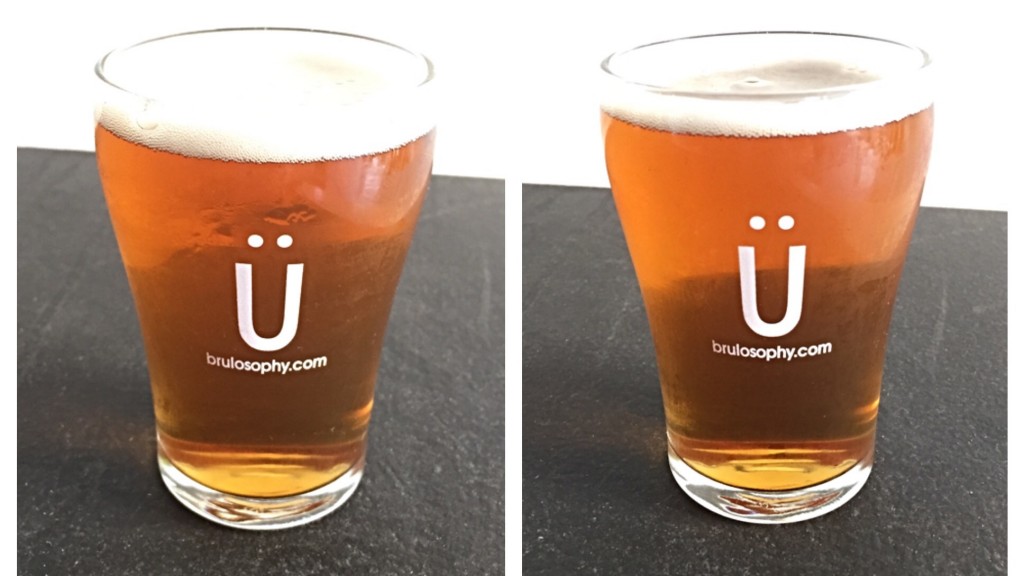
| RESULTS |
A total of 26 BJCP judges, experienced homebrewers, and craft beer enthusiasts participated in this xBmt, each blindly served 1 sample of the loose hop beer and 2 samples of the bagged hop beer in opaque cups then asked to identify the one that was different. At this sample size, 14 accurate selections (p<0.05) would be required to imply statistical significance, which is exactly the number who identified the unique sample (p=0.025), suggesting participants were able to reliably distinguish between a beer made with hops added loose in the kettle from one where the boil hops were bagged.
A brief comparative evaluation of only the two different beers was then completed by the 14 tasters who were correct on the triangle test. Regarding preference, 7 tasters reported liking the loose hop sample more than the bagged hop sample, which 4 thought was better. Two tasters noted the beers as being different but had not preference, while 1 taster perceived no difference. When asked to choose the beer they thought had the hops added loose, 10 of the 14 made the accurate selection, a pretty staggering amount relative to other xBmts.
LAB ANALYSIS
Curious if the claim that hop sacks somehow attract bitterness might help explain the perceived differences between these beers, I sent a couple samples off to Oregon Brew Lab for IBU testing, this time making sure to do it right. In less than a week, I received an email with the subject line indicating the results were ready. Other nerds of my ilk can likely relate with the excitement such an email incites. I opened the attached PDF admittedly expecting to have my hunch confirmed.
Bagged Hops During Boil
Loose Hops During Boil
While in the expected direction, the difference of 2 IBU certainly wasn’t enough to convince me level of bitterness was responsible for the perceptual differences between the beers. Moreover, the measured IBU was over 20 points lower than the IBU predicted by BeerSmith, and these were fresh 2015 crop hops. I’m intrigued and confused.
My Impressions: My personal belief going into this xBmt was that hop filtration during the boil has no qualitative impact on beer, and because of this, confirmation bias could easily have influenced my inability to detect a difference. Except I was able to identify the unique beer in all of the 6 “blind” triangle tests I took. The differences couldn’t have been more subtle, I likely would have thought I was drinking the same beer if served a pint one after the other, they were that similar. However, when intently focusing on the differences, I perceived the bagged hop beer as being less bitter with a more rounded malt flavor, while the the loose hop beer came across as possessing a minimally sharper bitter character that balanced the maltiness a tiny bit more. Given my accuracy on the triangle tests and my ability to identify each beer, it’s totally likely my personal preference is driven more by how I brew than what I actually like more, let’s just say I don’t plan to re-integrate the use of hop bags in my process.
The beer was actually pretty good, though I think it would have been better had I done the dry hop additions per the clone recipe. Regardless, I bought a relatively fresh sixer of Deschutes Mirror Pond Pale Ale that I had a few friends blindly compare to my version. They all thought my Pirror Mond was more flavorful and generally preferred it to the original, with one person commenting that Mirror Pond had more of a mineral and slightly metallic character when sampled next to mine. Not a single person ever noted a grassy flavor or aroma in either of the beers.
| DISCUSSION |
The idea of an IBU sensitivity threshold has been a topic that’s been discussed by brewers for awhile, some claiming a difference of up to 5 IBU as being unnoticeable while others have proposed a non-linear relationship based on percentages. The fact lab data showed the bagged hop beer to be only 2 IBU (8%) less than the loose hop beer makes the results of this xBmt all the more interesting to me, mostly because I have a very difficult time accepting that this seemingly tiny discrepancy is responsible for differences between the batches. Even accounting for the margin of error leaves us with a difference of just 4, still less than what most people to think would produce a noticeable effect. And yet, a large enough portion of participants were indeed capable of telling the beers apart. Could it be some other factor of using a nylon bag had an impact? I’m certainly no textiles expert, but I’m left wondering if perhaps something about the nylon played a role in the flavor of the bagged beer and if the results would be similar using a stainless kettle hop filter.
Even though these results suggest using a nylon bag has some sort of appreciable effect on beer compared to adding hops loose in the kettle, it’s certainly not drastic enough for me to recommend people change their process, particularly if such filtration is necessary due to chiller type or some other post-boil process. On the other hand, folks looking to simplify their brew day use immersion chillers likely have little to worry about should they decide to ditch the sack.
If you have any thoughts on this xBmt, please share them in the comments section below!
Support Brülosophy In Style!
All designs are available in various colors and sizes on Amazon!
Follow Brülosophy on:
FACEBOOK | TWITTER | INSTAGRAM
If you enjoy this stuff and feel compelled to support Brulosophy.com, please check out the Support Us page for details on how you can very easily do so. Thanks!

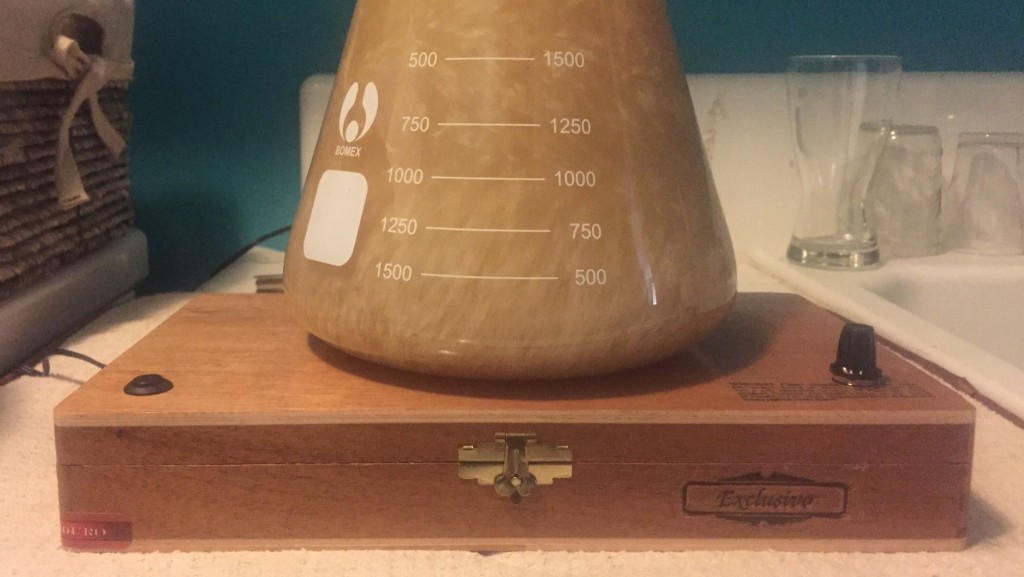
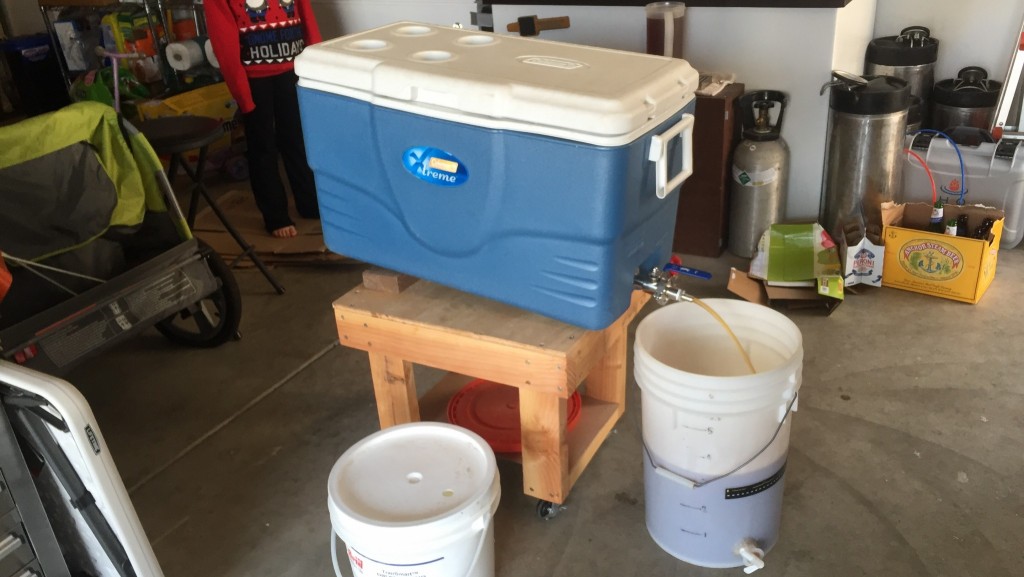
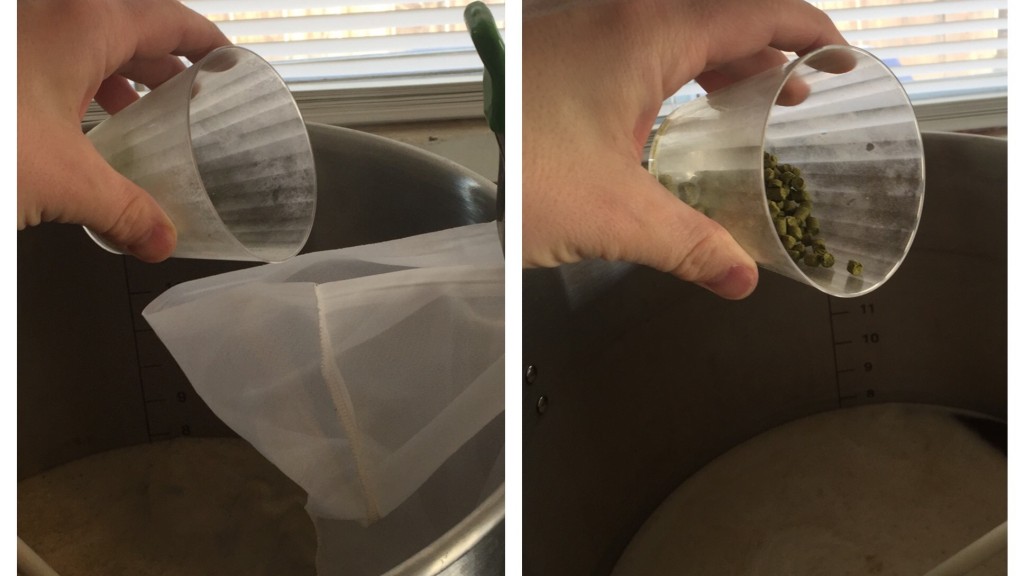
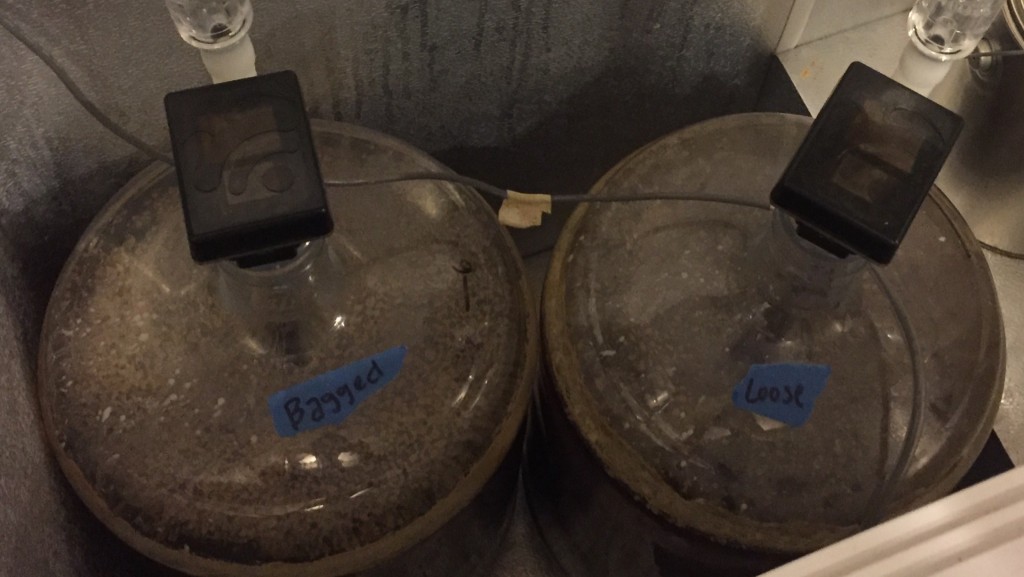













108 thoughts on “exBEERiment | Kettle Hops: Loose vs. Bagged In An American Pale Ale”
Is there ever enough hops? I bag and have bagged for the last 30 batches maybe more. I bag the grain, and the hops, you could say ” I got it in the bag”. I love this website and the details taken to xBmt. Plus 10% if bagging, and again is that really enough…. Here I was wondering why I get little gelatin balls in the bottom of my boil kettle sometimes and end up comparing Hops loose or in a bag in the boil kettle….SMH
I realise this is an older article now, but did you consider that the hops may just have been better able to release flavours and aroma while loose and freely moving? Increased flavour release could play more of a role than ‘filtering’…
It would be cool to redo this experiment – IMO ideally with the same recipe – and in the “loose” hops kettle, place an identical nylon bag that the hops is not inside of. The goal would be to try and see if the nylon bag had something to do with flavor, or if it was the removal of so much hops material from primary fermentation.
(In a perfect world I think you’d want to do three sub-batches, so you could compare more directly between “loose with empty nylon bag” and both “loose, no bag” and “bagged” with all other variables being as close as possible, but I could see practicality might argue against that.)
Helpful info. Fortunate me I found your website unintentionally, and I am stunned why this
accident did not took place earlier! I bookmarked it.
Excellent article. Keep writing such kind
of info on your blog. Im really impressed by it.
Hello there, You’ve performed an excellent job. I’ll certainly digg
it and for my part suggest to my friends.
I’m confident they’ll be benefited from this site.